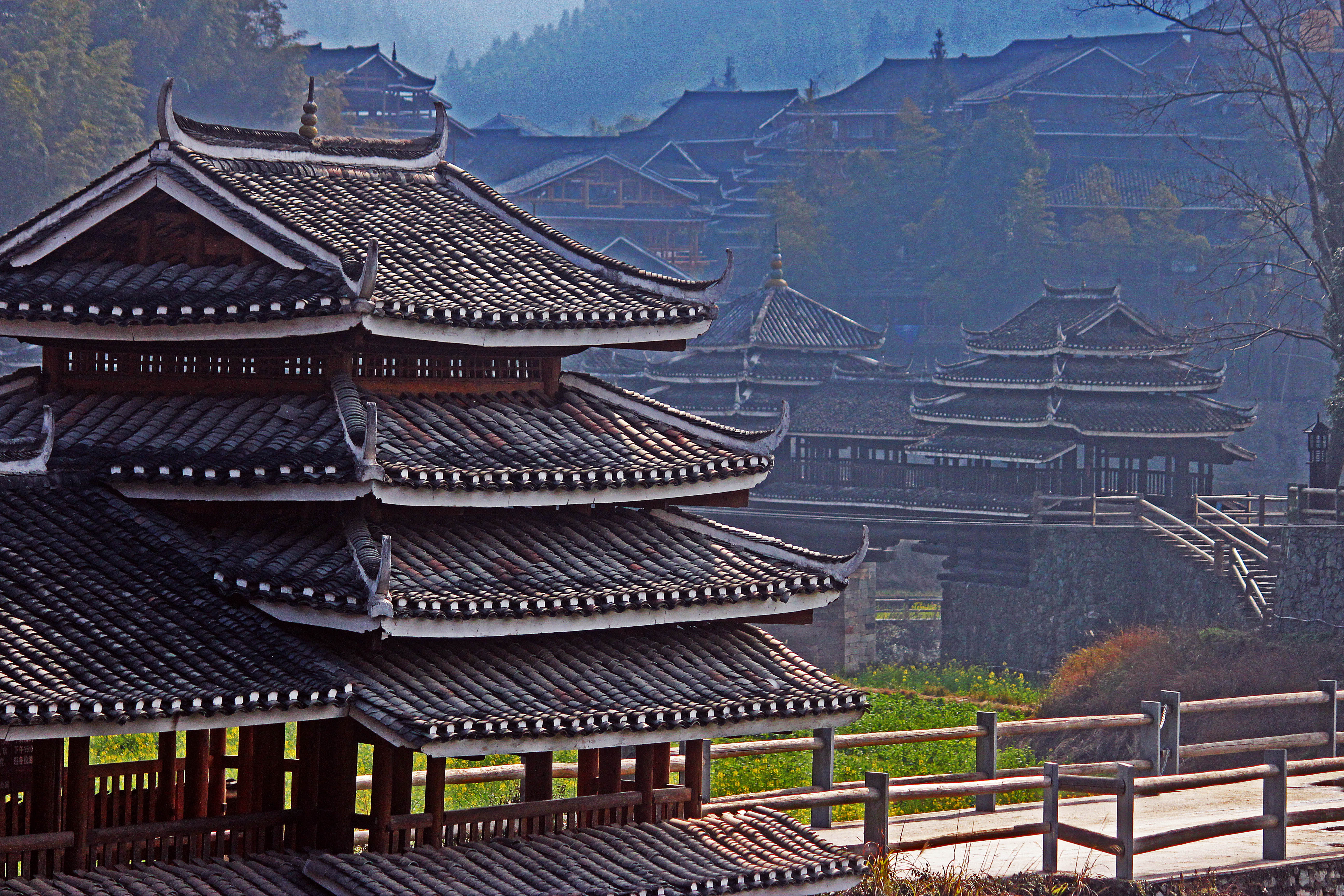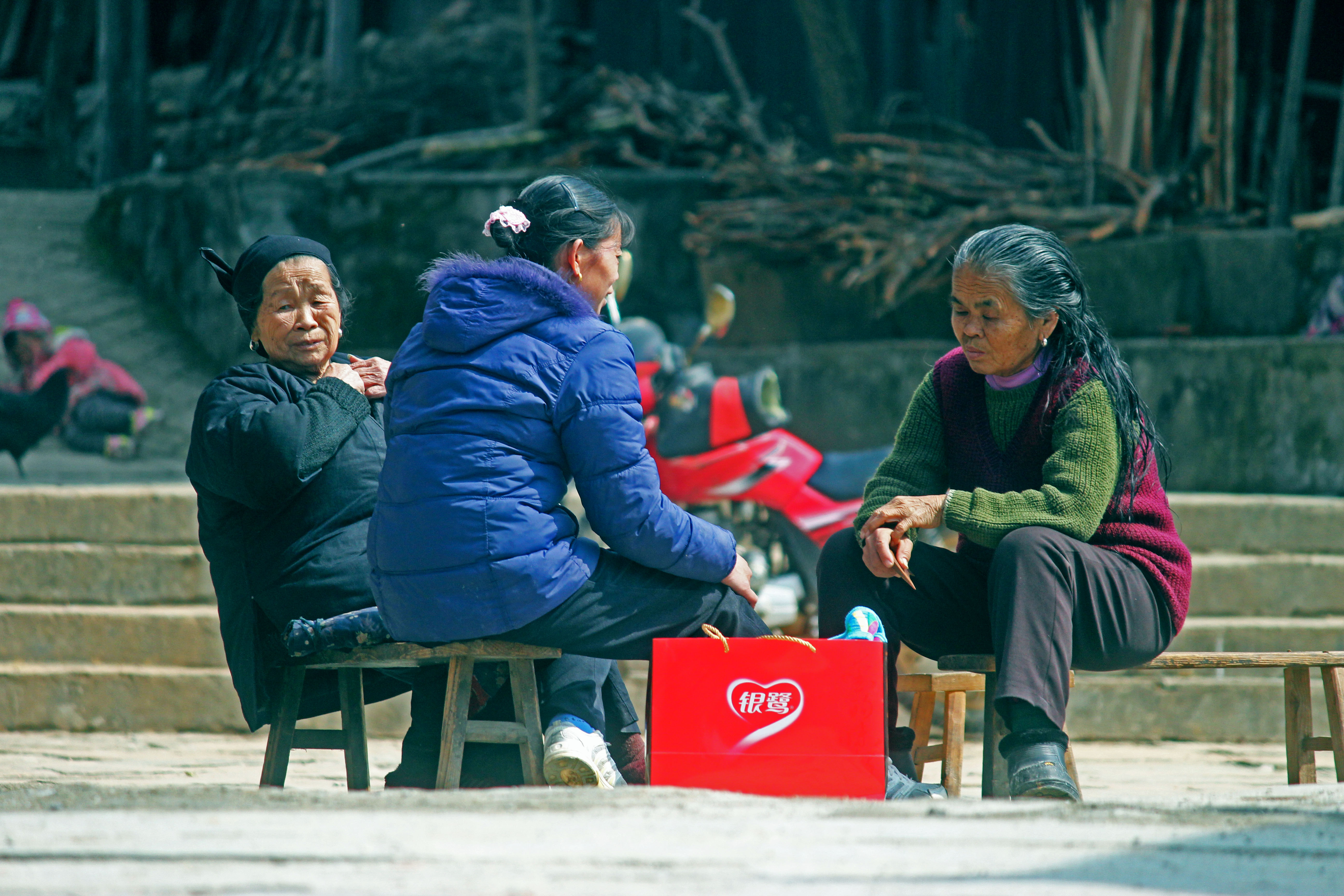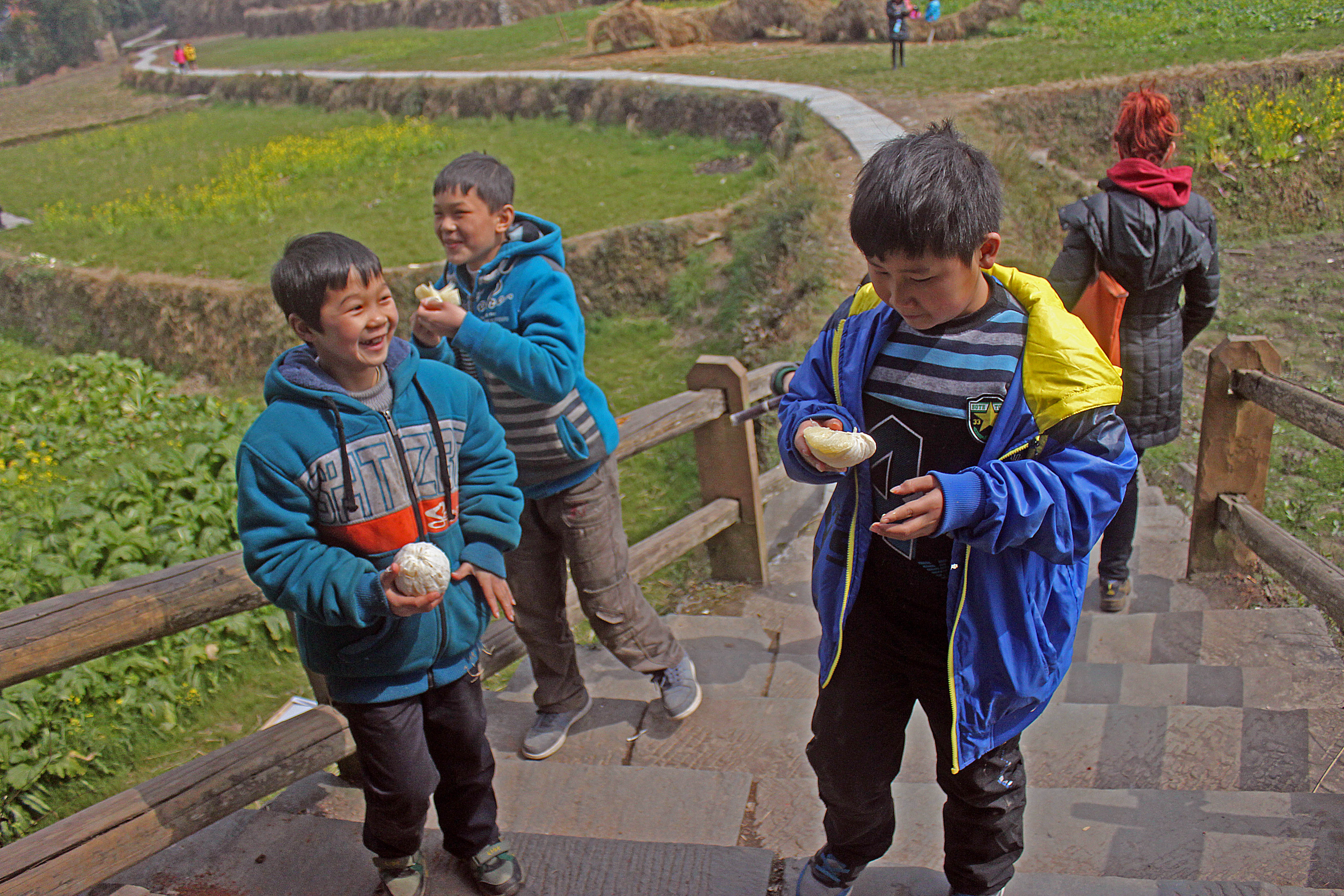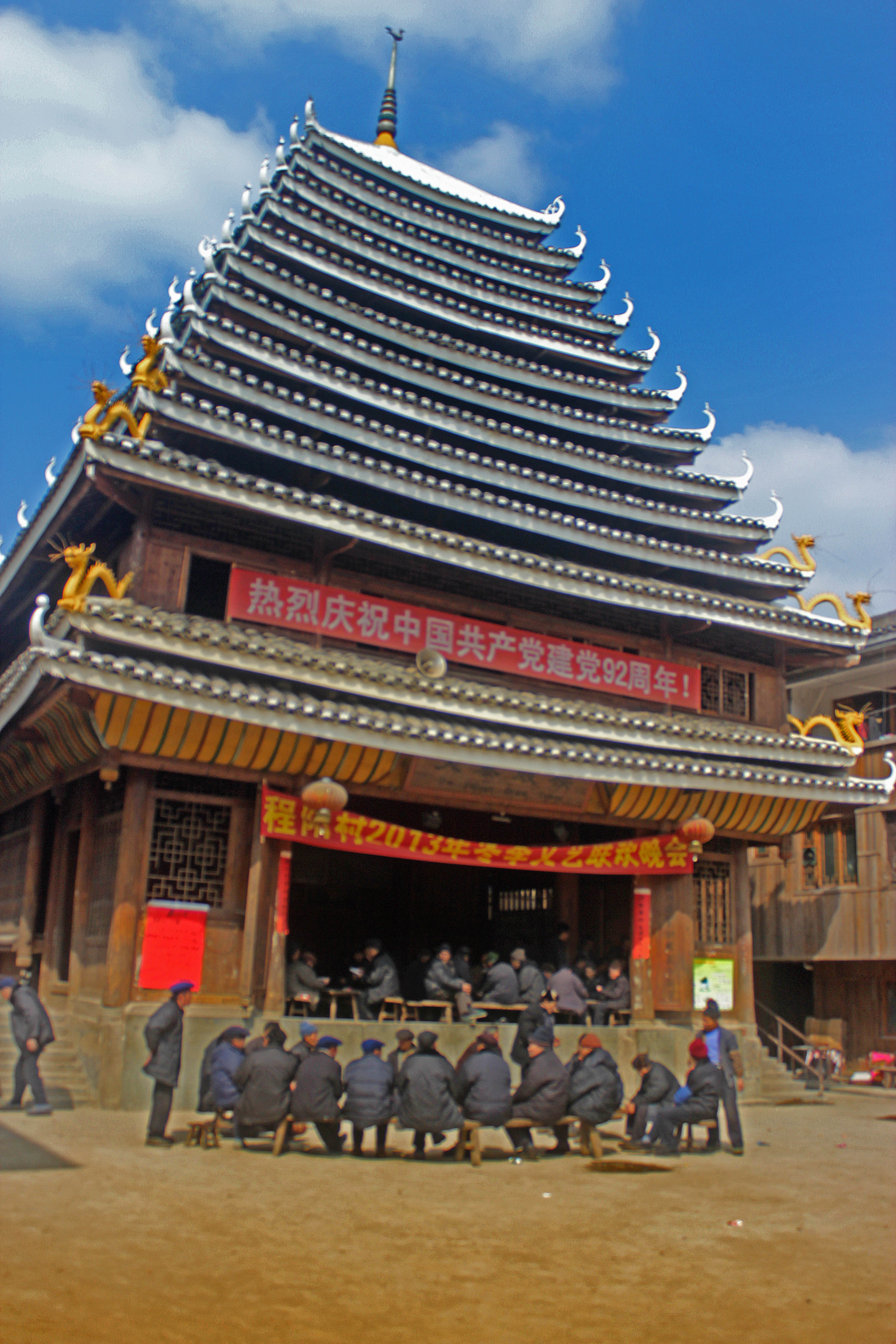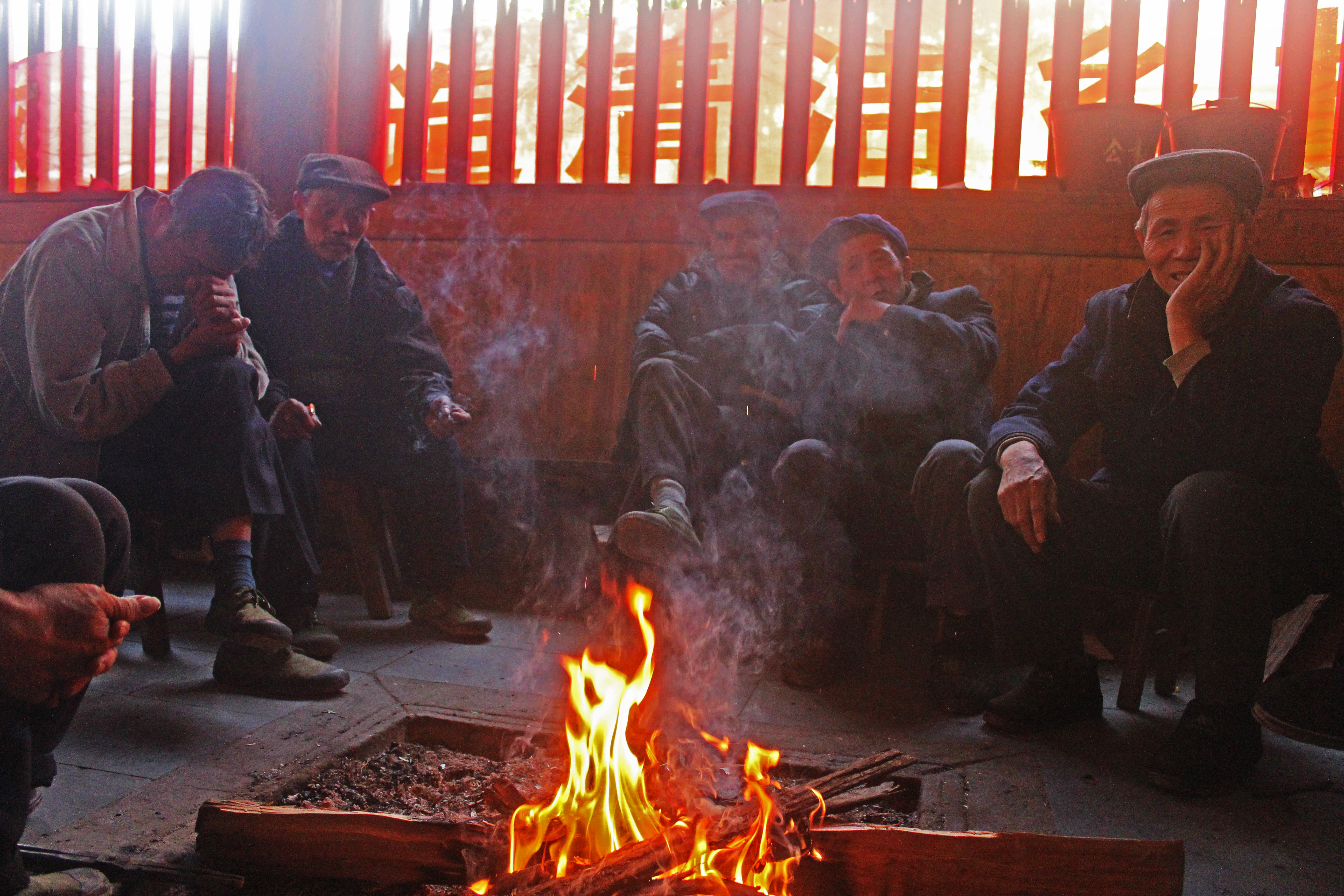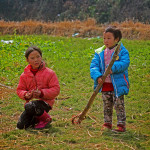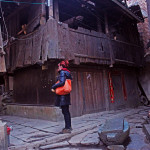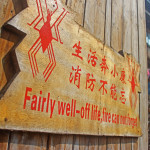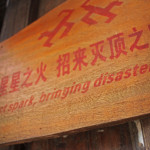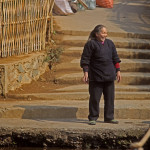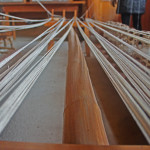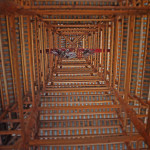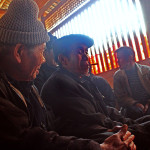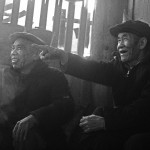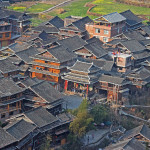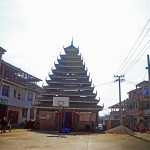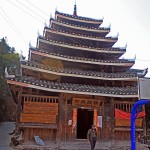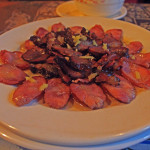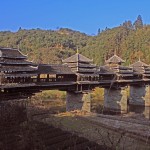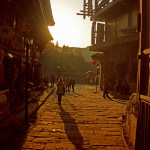Monthly Archives: February 2015
Checklist Traveling – Seeing the World as Opposed to Experiencing It

Sometimes it’s tough to just sit and let nature entrance you. I use it during stressful times in travel as “a bring me back to earth” tool.
Tourism in China is a weird thing. The Olympics of 2008 in Beijing spotlighted this once stigmatized powerhouse in a new light and the influx of tourists, curious to discover it’s rich history and culture, came pouring in from all directions. And the Chinese government sort of understands the process to deal with this. People want to be able to access the sites, the flavors and people that Maoist China tried to subjugate, repress and ultimately uniform (They use none of those terms, nor did the Maoist government do ANYTHING like that).

Temples way out of Beijing. Jietai Temple and Tanzhe Temple were beautiful daytrips, off the beaten path, that we could enjoy at our own pace without the throngs of people, as well as not feel the need to SEE it out of innate urge to complete something.
Their solution to this semi-new venture, tourism, is what’s strange. Like a flawed translation on many English signs throughout China, there seems to be a bit of a miscommunication of what international tourists are interested in seeing and how what their interested in seeing is expected to be presented. That’s a vast generalization, but for myself, if fly half way around the world to see something, I want to see something that is at least somewhat authentic and real. That’s the difference between seeing it in person and via media. Attached to this authenticity is an indescribable feeling of achievement, a connection to something beyond one’s own world, and the thrill of experiencing, immersing and discovering something new for yourself. Yet China’s approach to their unique cultures, languages and especially places, is reconstituting, rebuilding, modifying rather than preservation. Many of the historical sites that survived the Red Guard are being remodeled to provide a Disneyland-like, rather than an emerging experience in history. The grit, the real businesses, even the buildings themselves, have been replaced by five star accommodations, vendors selling chachkies and pre-fab, historical facades. One of China’s famous UNESCO heritage sites, Lijiang, almost lost it’s heritage status for attempting to rebuild the ancient black tiled roofed town as a resort, after one of it’s many earthquakes. It’s everywhere. Look in your China guidebooks. 9 times out of 10, the historical building you are standing in has been rebuilt. From Qianmen Business District in Beijing (torn down and rebuilt exactly the same) to large sections of the Great Wall.

Lamont, Alberta. Never heard of this place? Very cute town near Edmonton. Buildings, like Churches, for me, act as inspirational places during travel to just sit in, engage with, immerse yourself in and possibly be inspired. These structures, are many intricate parts woven together that are worth paying attention to, exploring and considering. Imagination runs wild in these places, all you need to do is let it.
Though maybe this is a very North American stance on tourism. Maybe China is focused on local tourism, since for Chinese nationals, it’s very difficult to impossible to leave the country. On that subject, I simply have my observations of large buses, unloading their leader with their volumed up megaphones and umbrellas, followed by hoards all wearing the same hats, so they know who they should follow, blending into an earthen colored mass, filling up quaint, quiet and historical places with bursting commotion, noise and refuse. Pictures are snapped, mechanically, fingers are held in peace signs, or two hands come together to complete an unbelievable heart, occurring in no matter what venue, winding cobblestoned street or tranquil holy temple. I fear though that the “real” China that the international community strives to locate is fast becoming theme parks, parades or simply, like the hutongs of Beijing and Shanghai, being demolished for shinier, newer facilities, that cheaply emulate something that could have stood for a thousand more generations.
Hidden Places – Chengyang – Wind and Rain Bridge, Peaceful Meandering, Chasing the Authentic
Our bus from the famous karst landscape of Yangshuo sits on the highway in a nameless, industrial spread. The only movement that exists is on the bus, as people squirm in the uncomfortably small and metallic sleeper bunks.
Finally, I jumped down from my bunk, unable to hold on anymore. I had to pee and no traffic jam or on bus facilities would stop me from accomplishing this goal.
In broken Chinese I told the bus driver my intentions and he reluctantly opened the door. Seeing this act of rebellion, several other Chinese men jumped down from their bunks and followed me out of the bus, into the resonating heat of the valley we were in. They followed me in a line as if we were on some sort of school field trip. I had no idea where I was taking this cohort of mostly suited Chinese men.
Fuck it. With limited options I resorted to the tried and tested, pee on a tree (a lemon tree, to be exact). The men, crowding to see what I was doing, looked flabbergasted.
“Peeing on a tree! Good lord! What’s next? Eating cheese???! Barbaric!”
So logically for them, the best place to urinate was in someone’s shed that they found open.
After relieving myself, I climbed up onto the wide highway to see what the hold up was. It was a gruesome scene. A car vs big truck scene, where the body of a man now lay splattered on the road, face covered by a poorly weighed down napkin.
We got into Sanjiang at night. With no leads on accommodations, we found a random lady waiting at the bus stop, whose broken English promise of a ‘warm bed’ seemed like an oasis in the dark. Our room was in a non-descript building near the bus station. It had running water, two beds, slippers and lock. Heaven as far as I’m concerned. Satisfied, we quickly ate some foodly food and went to sleep.
The next day, we were up early, as we had to find this mystical bus to Chengyang, our final destination on this leg of our South China Adventure. I refer to the bus as mystical, not because it’s driver is Greek God or a Wizard, no, it’s because finding buses in China is somewhat of an epic task, as they are constantly changing numbers and services. Crossing the river, following the much-lauded Ipad GPS, we found the bus stop up a hill and miraculously purchased tickets and got on the right bus in one fail swoop.
Forty-five minutes later through farmland, following the Linxi River, we had made it to Chengyang, in the Guangxi Province of Southern China.
Chengyang is a series of 8 villages of the Dong Minority that the Chinese government has made into somewhat of a tourist attraction. What this means is, along with sleeping accommodations, such as ours, the Dong Village Hotel (which was a lovely wooden structure), there is also an entry fee and hockers trying to sell you “local products”, which look oddly similar to items I could purchase in Beijing.
The local Dong Minority are friendly people. They have their own language, but from what I found, many of them understand basic Mandarin. They are known for the Wind and Rain Bridges and their polyphonic choir singing, which is a UNESCO recognized intangible cultural heritage. Their songs and stories are about nature and agricultural work, which are still very much part of the Dong peoples’ lives. Like elsewhere in China, they were curious about us as we walked through their towns, but seemingly were happy to have us there and were excited when they interacted with us, especially the kids. On a random side note, I also found out these people were traditionally involved in bullfighting! That is nuts and doesn’t fit with the image of this truly tranquil place.
We quickly dropped off our stuff at the hotel and went to explore. To gain perspective of where we were, we climbed up some random steps into the forest, past some tea terraces where we found an observation deck that looked out onto the whole valley. If we followed the river to the horizon, we could see the villages, nestled into the green trees and hilly landscape, with their easily identifiable dark wooden tiled roofs and their central cone shaped drum towers.
Not a lot of movement going on below, which in China, is an odd feeling, since even in the remotest of places, hustle and bustle seems to be a national credo that all adhere to.
No, Chengyang is a place for the somewhat slower paced. Though the bridges are UNESCO heritage attractions, it’s remoteness and lack of anything to do (completely subjective, as I found LOTS to do), make it still a safe haven for travelers wishing to just walk around and be with the locals. And that’s what there is to do.
Over the two days we spent there, we made our way from town to town and stopped and sat with people in the traditional drum towers, that act as a meeting point for each town for ceremonies, such as dancing, smoking tons of gross cigarettes, playing cards, washing the town TV (wonder who decides on the channel) and simply a hangout spot:
“Hey, where you at?”
“I’m at the drum tower”
“Ya? What you doing?”
“You know. Sitting around smoking, around a fire, with a bunch of other dudes.”
“Sounds like a blast! See you there!”
Though we couldn’t speak to the older generation that asked us to sit around a fire as they chimneyed smoke from their cracked mouths and blackened teeth, we shared a few international laughs at our situations and shook numerous outstretched hands, liked celebrities. The towers themselves look like wooden Christmas trees, with beautifully painted and decorated interiors.
The main attractions are no letdowns. The Wind and Rain Bridges are defiant marvels, spanning over the Linxi River. Since the turn of the 20th century when they were originally built, hey have survived the elements, without a single nail in their wooden structures. And they aren’t simply covered bridges. Like the drum towers, they are also focal points with many functions to them. They act as a thoroughfare for vendors, a safe haven from the rain and as a place of tranquil prayer at one of the many alcoved temples.
The meals we ate in town varied in quality and if you asked me, I couldn’t name you exactly where or what we ate. And that’s the joy of exploration, the spontaneity of trusting new situations and just putting whatever they have labeled food into your mouth. Though, the food in Chengyang isn’t ex-factor level. It is simple fair of veggies and meat. There are a few local specialties, such as rice wine and cooked pumpkin, which are both delicious and apart.
The towns themselves are fun little mazes to wander through. The buildings are two storied or on stilts (Ganlan houses), tightly compact, intersected by small cobbled passages. Life exists up and down, left and right, and of all variations and species. Where you’d expect a human head to poke out, a rooster stares down at you, head cocked sideways, listening. The sun is all but blocked out of these wooden crevices, and black figures make their way from one house to another, pausing for a curious moment to see us making out way towards the light.
Though the hotels rent bicycles, the immediate villages are easy enough to explore on two, semi-affluent of hiking all day, feet. I, myself, are always curious what’s beyond the tourist map (literally a map outlining the 8 walkable towns), so we did rent bicycles and cycled beyond the Chengyang area. What exists there are other Dong Villages that are also attempting to build up their tourist cred to attract new visitors to their towns. Though, it’s hard to say if this new infrastructure is a local endeavor or the government’s moneymaker.
It’s a place of deep reflection and nature. Sitting by the river and staring at the wooden villages, like stilted reminders of the past, I realized how utterly dense this country is and how diverse it’s makeup is. Many of these people were force fed nationality, of a country they couldn’t be farther from being apart of. And yet that underlying animosity that exists slowly flows downstream. What you’re left with is nature sounds, the window flipping through my book novel. Thank goodness I folded the page to remember my spot.
Some would say that once you saw one village, you’ve seen them all and there’s only one lousy museum with NO English. This is culture at its rawest, real people who have to get up and work the fields or they starve, wells in use, because there isn’t enough water, fires in pits used to heat the room. The museum isn’t MOMA, it’s what some MOMA artists use as inspiration or as reflection upon. It is a room filled with preservation, a rare feat in China, of usable items, of tradition, of belief. But above a basket or a drum tower, the people in these small pocket communities, have the twinkle of a deep routed, energetic spirit in their eyes and are well worth the several bus rides and train rides to get there. Did I mention they use to be in BULLFIGHTING? Ernest Hemingway approved! Travel details and gallery below!
TRAVEL DETAILS!:
GETTING THERE:
If you arriving from Guilin, you will arrive at the HeDong bus terminal. To get to He Xi bus station walk out of HeDong bus station, turn right and then turn right onto the bridge, when you come off the bridge, keep walking straight across the intersection and the bus station is a little way up the hill on the right.
The address for He Xi is: 三江河西客运站, located in 71 Xingyi St. Sanjiang.
If all else fails, the word Gong Gong Qi Che (Gong-gong-chee-ch’uh) means bus.
Simply saying Chengyang Gong Gong Qi Che should get someone’s attention.
At the end of saying that phrase, if you want to add a bit of flair to your random blurt, you can say “Zai Nar?” (Z-eye N-uhr), which means “where is”.
The word for ticket is “piao” (pee-ow! – like a laser sound).
The bus heading to Chengyang costs around 6 Y and takes around half an hour. From around 7:30am, it leaves when it is full, to around 5pm.
The bus coming back, meets right outside of the main entrance to the park. Make sure you flag it down. The last bus leaves around 5pm.
FEES:
The bus to Chengyang, was around 10 Y. The park entry fee is 60 Y. There didn’t seem to be a way of avoid this, though, if you can it’s not such a bad thing, since the money apparently isn’t going into the pockets of the locals.
ACCOMMODATION:
The Dong Village Hotel cost around 80 Y per night, but had spacious, wooden rooms, wireless, western toilets, BIG balconies, overlooking the Linxi river and the Wind and Rain Bridge. They also have bicycles for rent, which we used and were quite well maintained. There are also a few guesthouses in town that are both labeled and unlabeled. I am sure you could also stay with a local for a really, personal experience, exciting for both yourself and your host.
OTHER STUFF:
I did see some western food on the menu, but why…..would….you? Eat local and try something new. If you are not allergic to anything and don’t have any food inhibitions, point to something on the menu and get ready to eat a mystery meal.
If you are into trying to local foods, you can attempt to ask the waiter (foo-yan) if there are any local specialties:
“yo te se t’eye ma?
GALLERY:
- Children, confused and curious at our presence.
- Making our way through the stilted houses.
- funny sign one.
- funny sign two.
- Smiles were abundant in these towns and raucous laughter.
- Threading work in the museum, showing the Dong people’s history and culture (not a lot of English…but still worth a visit).
- Roof of the drum tower.
- Old men hanging out in the drum tower.
- Inside joke.
- One of the villages up close.
- ?? If you can name this veggie…
- Another drum tower in the centre of town.
- drum tower three.
- Locally made sausages, which are a local specialty.
- Another shot of the bridge.
- Beautiful sun casting shadows over this wonderful place!


